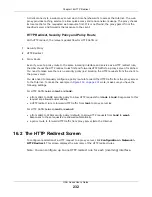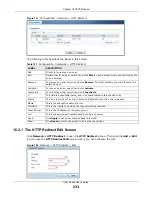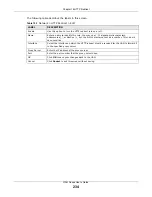
UAG Series User’s Guide
219
C
H A P T E R
1 4
NAT
14.1 NAT Overview
NAT (Network Address Translation - NAT, RFC 1631) is the translation of the IP address of a host in
a packet. For example, the source address of an outgoing packet, used within one network is
changed to a different IP address known within another network. Use Network Address Translation
(NAT) to make computers on a private network behind the UAG available outside the private
network. If the UAG has only one public IP address, you can make the computers in the private
network available by using ports to forward packets to the appropriate private IP address.
Suppose you want to assign ports 21-25 to one FTP, Telnet and SMTP server (
A
in the example),
port 80 to another (
B
in the example) and assign a default server IP address of 172.16.0.35 to a
third (
C
in the example). You assign the LAN IP addresses and the ISP assigns the WAN IP address.
The NAT network appears as a single host on the Internet.
Figure 140
Multiple Servers Behind NAT Example
14.1.1 What You Can Do in this Chapter
Use the
NAT
screens (see
) to view and manage the list of NAT rules and
see their configuration details. You can also create new NAT rules and edit or delete existing ones.
14.1.2 What You Need to Know
NAT is also known as virtual server, port forwarding, or port translation.
Finding Out More
for technical background information related to these screens.
















































